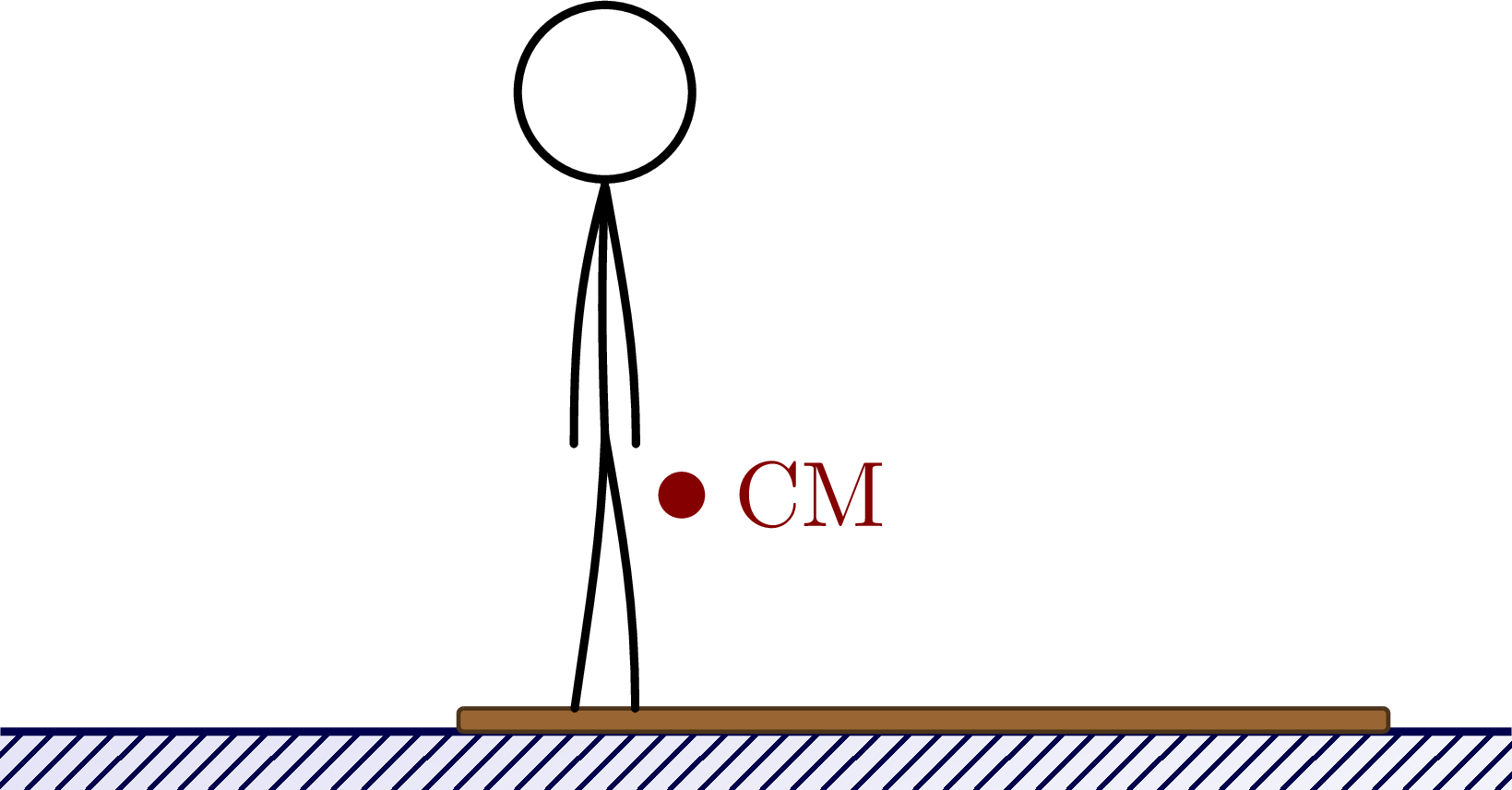A person walking over a plank on ice as illustration of conservation of momentum and center of mass.
The stick figure is inspired by xkcd and minutephysics. These figures are used in Ben Kilminster’s lecture notes for PHY111.
Edit and compile if you like:
% Author: Izaak Neutelings (October 2020)% Inspiration: https://tex.stackexchange.com/questions/25531/adding-underbrace-in-tikz\documentclass[border=3pt,tikz]{standalone}\usepackage{physics}\usepackage{siunitx}\usepackage{ifthen}\usepackage{tikz}\usepackage[outline]{contour} % glow around text\usetikzlibrary{calc}\usetikzlibrary{angles,quotes} % for pic\usetikzlibrary{patterns}\tikzset{>=latex} % for LaTeX arrow head\contourlength{1.4pt}\colorlet{xcol}{blue!70!black}\colorlet{vcol}{green!60!black}\colorlet{myred}{red!65!black}\colorlet{acol}{red!50!blue!80!black!80}\tikzstyle{mass}=[line width=0.6,red!30!black,fill=red!40!black!10,rounded corners=1,top color=red!40!black!20,bottom color=red!40!black!10,shading angle=20]\tikzstyle{velocity}=[->,vcol,very thick,line cap=round]\tikzstyle{ground}=[preaction={fill,top color=blue!70!black!10,bottom color=blue!70!black!5,shading angle=20},fill,pattern color=blue!30!black,pattern=north east lines,draw=none,minimum width=0.3,minimum height=0.6]\tikzstyle{limb}=[thick,line cap=round]\begin{document}% MAN ON ICE - at rest\def\W{5.2} % ground width\def\L{3.2} % length\def\T{0.08} % plank thickness\def\H{2.2} % human height\begin{tikzpicture}\def\x{-0.1*\W} % human position\coordinate (O) at (0,0);% GROUND + PLANK\draw[ground] (-\W/2,0) rectangle++ (\W,-0.2);\draw[thick,blue!30!black] (-\W/2,0) --++ (\W,0);\draw[thin,brown!40!black,fill=brown!80!black,rounded corners=0.5]
Click to download: dynamics_plank_ice.tex • dynamics_plank_ice.pdf
Open in Overleaf: dynamics_plank_ice.tex



